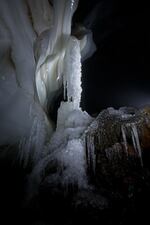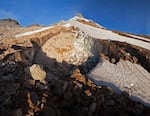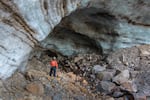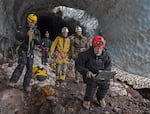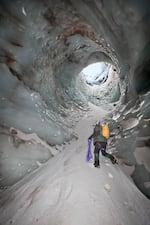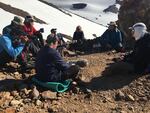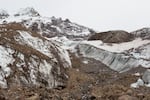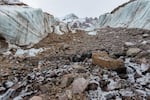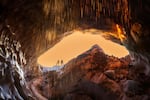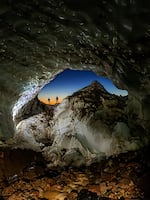Beginning in 2011, a team of explorers led by Brent McGregor, Eduardo "Eddy" Cartaya and Scott Linn began exploring a system of spectacular glacier caves on Mount Hood. Over the next few years they photographed and surveyed more than 7,000 feet of sub-glacial passages, earning the caves the distinction of being the largest glacier cave system in the lower 48 states.
By 2016, the caves were gone.
The cause of the glacier caves’ collapse and disappearance is complex. Dr. Andreas Pflitsch, an expert in cave and subway climatology at Ruhr University in Bochum, Germany, joined the expedition to Mount Hood in 2015 and 2016 to better understand what happened and why.
While the Sandy glacier has lost more than 50 percent of its mass in the last 100 years, there is more to the story than just climate change.
Click through the photos below to learn more about the disappearance of Mount Hood's glacier caves.
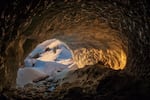
Images like this one helped popularize the dramatic glacier caves discovered on Mount Hood. After the caves were featured on OPB in 2013, national and international media from the BBC to the Smithsonian followed suit. Visits to the remote and dangerous caves increased steadily in the years that followed.
Brent McGregor


